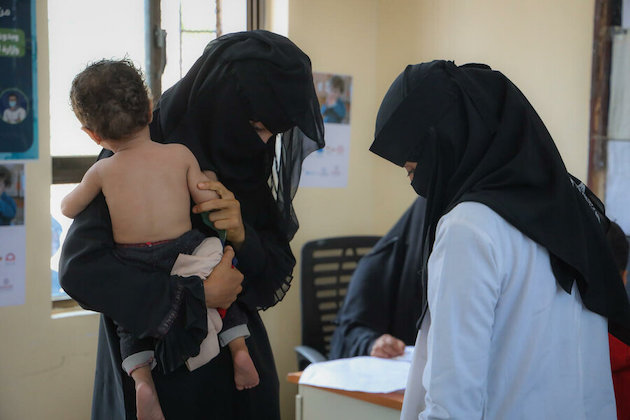5 things to know about the Financing for Development Forum — Global Issues
There are so many conflicts, humanitarian disasters, extreme weather events and economic upheavals taking place in the world, that a new word is being used to describe the current state of affairs: the “polycrisis”.
The word appeared in 2022, a year that began with tentative hopes that the global economy would begin to recover from the huge disruption of the COVID-19 pandemic, but was soon dominated by the Russian invasion of Ukraine.
Amidst all of these competing crises, many countries simply don’t have the resources to invest in recovery, climate action, and sustainable development.
This is the challenging environment in which the 2023 Financing for Development (FfD) Forum is taking place at UN Headquarters, between 17 and 20 April, aimed at pushing forward policies to address global developmental issues, from crippling debt, to under-development, and food insecurity.
Here are five things to know about this year’s FfD Forum.
1) Why is this year’s Forum important?
© FAO/Mani Tese/Leonel Raimo
Local community members in Quelimane, Mozambique, restore mangrove forests to prevent flooding.
2023 is shaping up to be a pivotal time for sustainable development. This year marks the midpoint between 2015, which saw the launch of the Agenda for Sustainable Development, and 2030, the deadline for completion of the Agenda’s 17 Sustainable Development Goals (SDGs).
The UN is planning to inject fresh momentum towards achieving the Goals at a major SDG Summit in September. However, no progress will be made without significant funding
In February, UN Secretary-General António Guterres acknowledged that the SDGs are way off track, and launched an SDG Stimulus plan, which calls for richer countries to funnel an extra $500 billion each year towards financing the SDGs. “Investing in the SDGs is both sensible and feasible,” he said. “It is a win-win for the world, as the social and economic rates of return on sustainable development in developing countries is very high.”
The Stimulus plan also calls for the international financial system to be transformed, so that the crippling debt burdens of developing countries are reduced, and access to funding is made easier. Making this transformation a reality will be on the agenda of this year’s FfD Forum.

© FAO/Eduardo Soteras
Women sort coffee beans in Addis Ababa, Ethiopia.
2) What are the main issues?
According to the 2023 Financing for sustainable Development Report, the number of people facing acute food insecurity has doubled, compared to pre-pandemic levels (from 135 million in 2019 to a projected 345 million in 2023). The war in Ukraine has led to higher food prices, up 50 per cent in 2022 compared to 2019.
The industrialization of least developed countries and many African countries is not progressing as hoped: the 2030 Agenda calls for a doubling of added value from manufacturing in African countries by the end of the decade. That means making and selling more products rather than selling the raw materials to other countries.
Significantly, added value actually fell from around 10 per cent of GDP in 2000 to nine per cent in 2021.
Debt repayments are also hobbling poorer nations: in 2022, 25 developing countries had to dedicate more than a fifth of their total revenues to servicing public external debt.
And gender inequality remains a big drag on development: in 115 countries women cannot run a business the same way as men.

© ILO/Marcel Crozet
Dock workers unload cargo from a ship in Dar es Salaam, Tanzania.
3) Which potential solutions will be discussed?
The Forum’s agenda will be based largely on the findings of the 2023 Financing for Sustainable Development Report, released on 5 April, which calls for stronger tax systems, more private and public investment for sustainable development, and reforms of the international financial system to allow more resources to be raised.
The report also argues that massive investments are urgently needed to accelerate transformations in areas such as electricity supply, industry, farming, transportation, and buildings, to bring about a “new green industrial age.”
Industrialization is often associated with pollution and waste, but it has historically been an engine for progress. The “green industrialization” proposed in the Report involves supporting low carbon industries, including renewable energy sources such as wind and solar, the digital economy, and the development of policies that lead to investment in sustainable activities, whilst reducing the negative environmental impact of industries.
There are positive signs that the message is beginning to get through: global spending on the energy transition rose to a record high of $1.1 trillion in 2022, surpassing fossil fuel system investments for the first time ever, and the green economy has become the fifth largest industrial sector by market value, $7.2 trillion in 2021.

© UNICEF/Patrick Brown
A boy carries water in a refugee camp in Cox’s Bazar, Bangladesh.
4) What are the risks of inaction?
The gulf between rich and poor is getting deeper, and, without a complete overhaul of the global economy, it’s expected that 574 million people – nearly seven per cent of the world’s population – will still be living in extreme poverty in 2030. In this scenario, external financing needs for LDCs and other low-income countries are expected to increase from $172 billion to $220 billion in the next four years.
Amongst the recommendations is a warning; if the suggested reforms are piecemeal, incomplete, or fail to take the SDGs into account, sustainable development will be unachievable, putting the 2030 Agenda and climate targets out of reach.

© Climate Visuals Countdown/Joan Sullivan
A technician works on a wind turbine blade in eastern Quebec, Canada.
5) What comes next?
No-one is under any illusion that the task ahead is huge and experts agree that long-term sustainable development will be elusive in contexts where humanitarian crises persist.
Ultimately, the UN’s economists want the FfD process to lead to a profound reform of global institutions that better address developing countries’ immediate needs.
Check out our Latest News and Follow us at Facebook
Original Source






